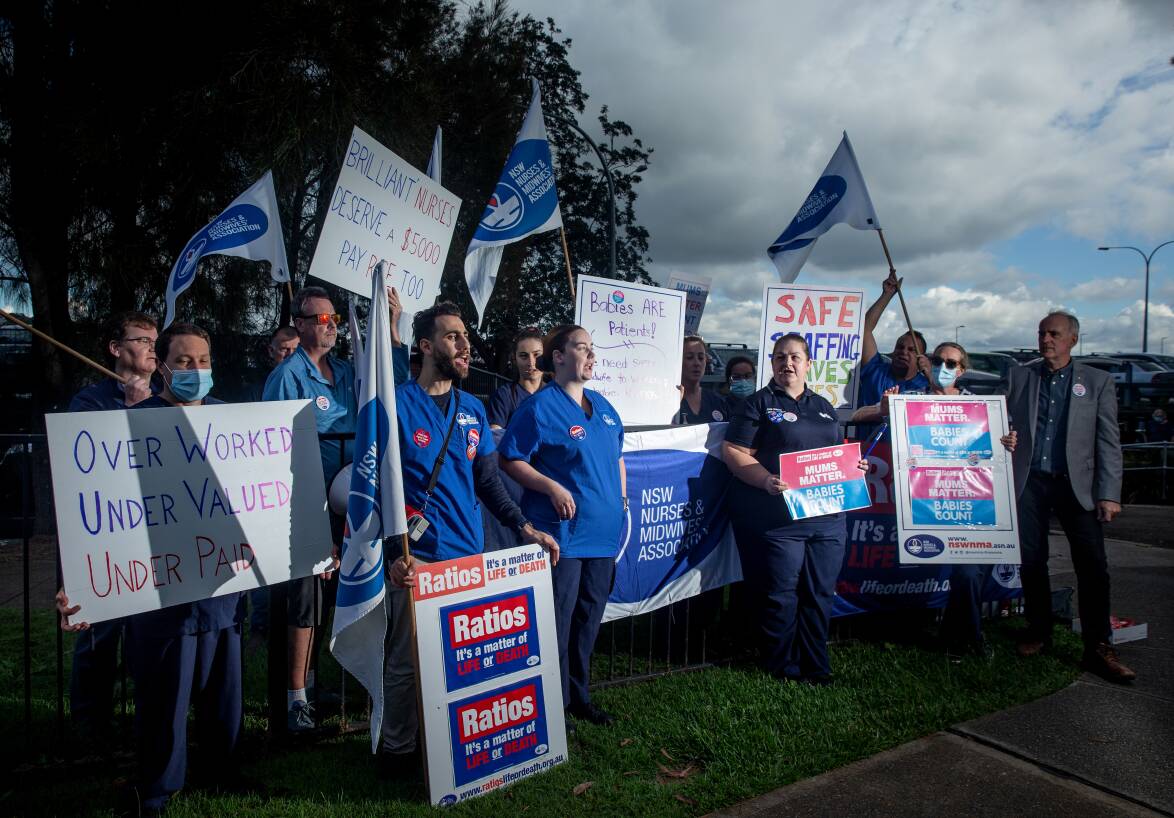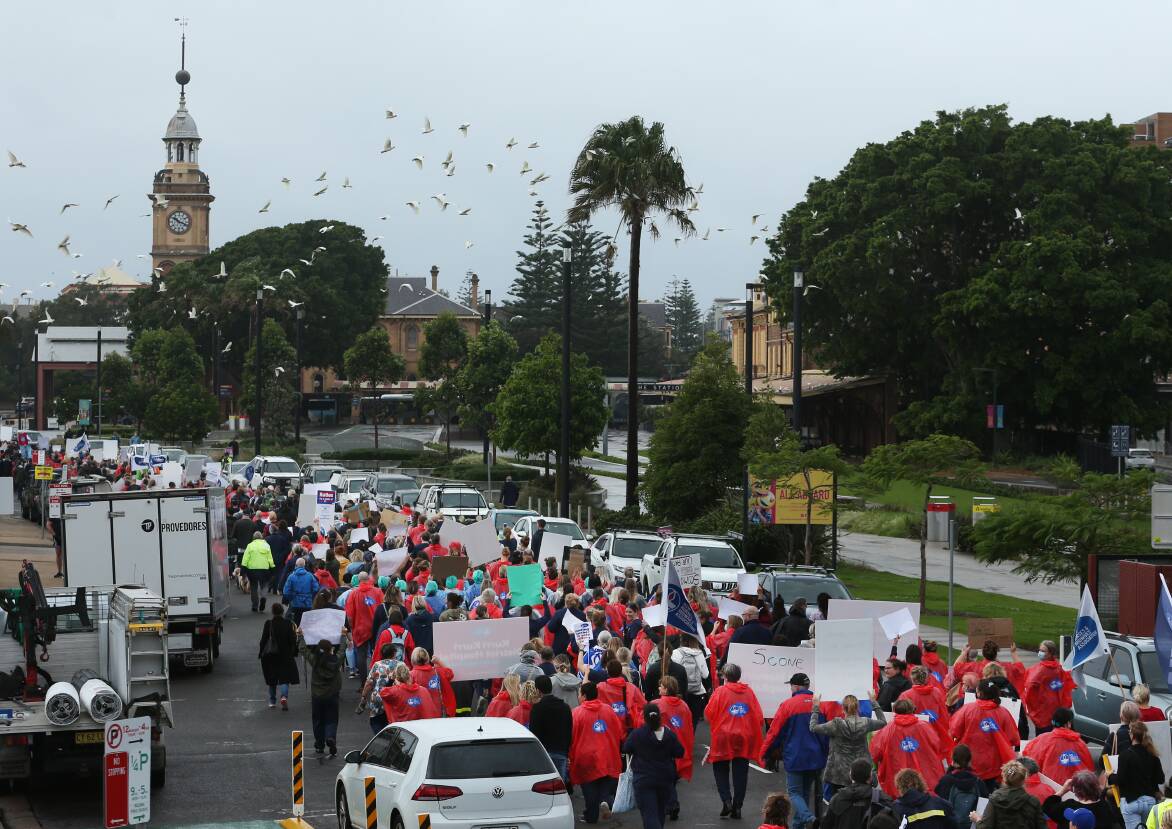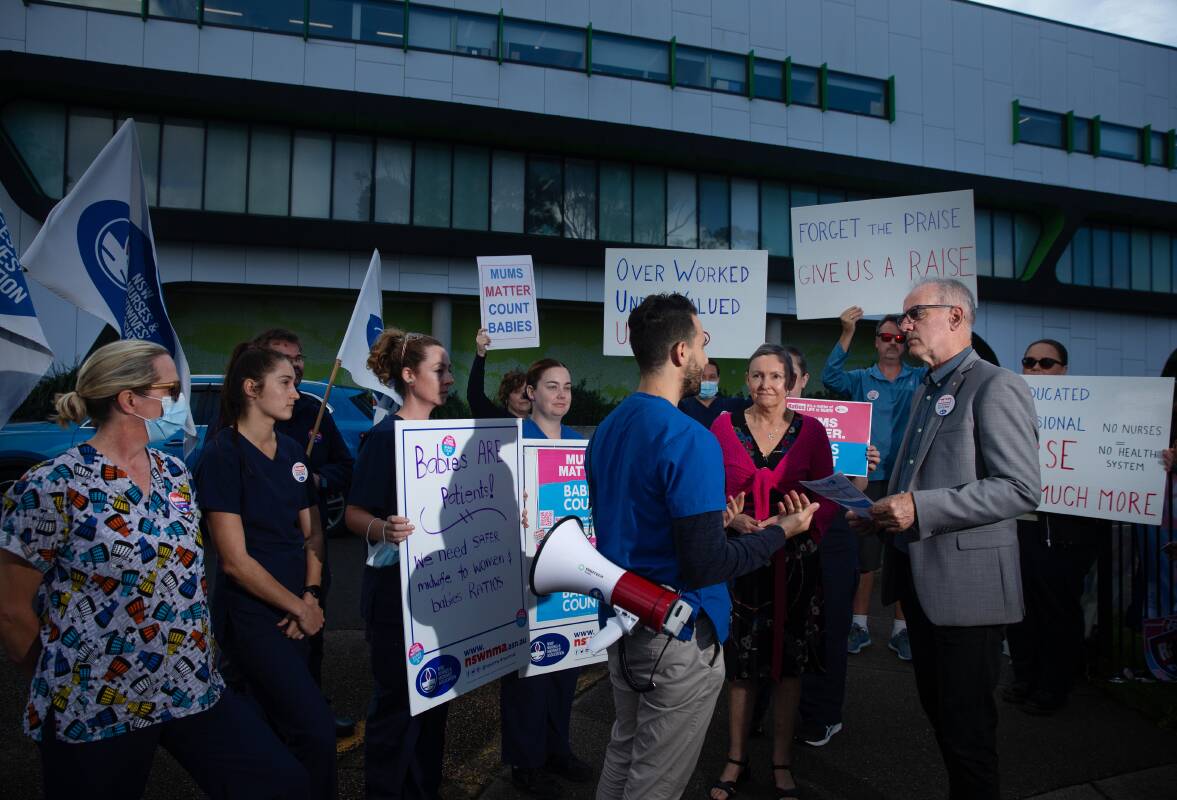
ALL they want is to be heard. Instead they got a love heart sticker and an invitation to bring their own cake to celebrate International Midwives Day.
Nurses and midwives have rallied outside John Hunter Hospital to continue their fight for safer staff ratios, a pay rise and to "make babies count" in their patient loads as the union warns the profession is on the "brink of collapse".
Midwives said they are "constantly and severely" understaffed - working longer shifts and extra hours because they would not leave mothers and babies "unsupported and alone".
At present, midwives can have four-to-eight women in their care - which NSW Nurses and Midwives Association delegate Jessica Plater said does not include the babies.
"When you start to include babies, our patient load can go from eight to 16 patients," she said. "How is this fair on our midwives, and how is this fair on the women and the care they receive?"

Nurses fight for safety in staffing
NURSING and midwifery is on the "brink of collapse" but the state government doesn't seem to care, the union says.
Members of the NSW Nurses and Midwives Association shared stories of exhaustion, burn out, and working 18-to-20 hour shifts at a rally outside the John Hunter Hospital on Thursday, with many contemplating whether they still had a future in the profession.
Rachel Hughes, the John Hunter Hospital branch secretary of the NSW Nurses and Midwives Association, said their concerns were a matter of life and death.
But their calls for safer workloads and a pay rise to keep up with inflation had been ignored by the state government.

"They don't seem to recognise that this is a serious issue," she said. "Nursing and midwifery is on the brink of collapse and our government just doesn't seem to care.
"We are all burned out. The constant message that we are not worth a pay rise, that we are not worth safer ratios, that we're not worth the things that nurses and midwives in other states are worth is getting through, and people are leaving.
"They don't want to be here anymore. They don't want to put their registrations at risk. They don't want to put their livelihoods at risk to be disrespected by a government that doesn't care."
Ms Hughes said nursing and midwifery staff often left a shift feeling they had not been able to provide the high standard of care their patients deserved, but there was only so much they could do. They had walked off the job for 24 hours in March.
"People can and will die," she said. "It's not a matter of if, it's a matter of when, and that's why we're scared.
"What else are we supposed to do? How else can we get them to listen to us?"
She said having one nurse responsible for three patients in the emergency department, one nurse to one patient in the resuscitation and intensive care areas, and one nurse to four patients on the wards would help address their safety concerns.

'Sneaky' pay rise for some a 'slap in the face'
It was "insulting", "frustrating" and "completely heartbreaking" to learn the state government had given senior staff in ministerial offices an almost 10 per cent pay rise while relying on the goodwill of nurses and midwives.
Wallsend MP Sonia Hornery said giving people on an already high income a "sneaky pay rise" while denying ratios and a 4.75 per cent pay increase for nurses was "unforgivable".
"It is a small number compared to nurses, but it's a bad look," she said at the rally.
A NSW Health spokesperson said the "flexible" staff to patent ratio system of "nursing hours per patient day" used in a range of wards across NSW Health, was a "multifaceted approach" that considered the numbers of patients, their complexity, acuity and care needs.
"While also allowing for the professional judgement of nurses, nurse managers and workforce managers to adjust staffing levels to reflect the changing care needs of patients," she said.
"The nursing hours per patient day model helps to ensure the right number of nurses are in the right place at the right time. The NSW Government and NSW Health continue to engage in talks with the union and remain committed to reaching a resolution in the best interests of our patients and all our healthcare workers."








